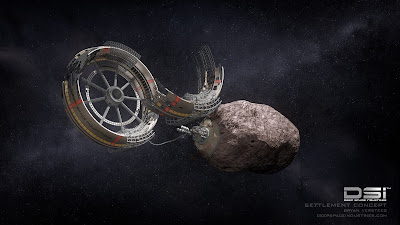This grainy picture was taken on October 24, 1946, almost 14
months after the end of World War II and almost 11 years before the
Sputnik launch. It was taken by American military engineers and
scientists, using a Nazi rocket launched from the White Sands Missile
Range, in New Mexico.
Yes, a Nazi rocket—the V-2.
At the time there was no NASA, and
human space exploration wasn’t a mainstream idea. The only people who
were really thinking about spaceships at the time were the Nazis of a
few years earlier and their spitzenreiter mad rocket science, a man by the name of Wernher Magnus Maximilian, Freiherr von Braun.
Von
Braun dreamed about spaceships and wanted to build rockets at all cost,
so he became a member of the Allgemeine SS and the Nazi Party. It was
then that Hitler gave him the money, material and slave labor to built
the V-2, the rocket bomb that terrorized London at the end of the WWII,
morals be damned.
But
by 1946, von Braun had become an American rocket scientist. And the
Americans had a bunch of V-2s, having seized the ones that weren’t
launched or were under construction when the Allies captured their
launch and factory sites at the end of the war. They were imported to
the United States, along with Von Braun.
Von Braun and the
Americans kept working on these and other missile designs while
launching the existing V-2s into space for testing. One of the
engineers, Clyde Holliday, had developed a 35mm camera that took a photo
every second and a half. None of the other scientists and engineers
cared much about photography. They only wanted information about cosmic
rays and aerodynamic performance.
Holiday understood even then
that images were going to be the most powerful application of space
rockets. He was right. Not only did space photography become
instrumental in our understanding of Earth, its surface and its weather
systems—hello frankenstorm Sandy—but it did something even more
important: make humanity realize where, and how small, we are.
In
1950, National Geographic showed these photos to the world for the first
time, and Holliday wrote that this is “how our Earth would look to
visitors from another planet coming in on a space ship.”
I’m sure
that everyone who saw them instantly had the impulse to jump in a rocket
and go see it themselves first-hand. I know I still do.
(article from War History Online)
|



















































